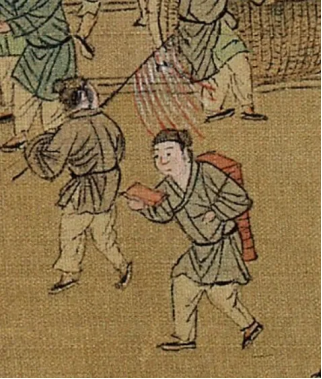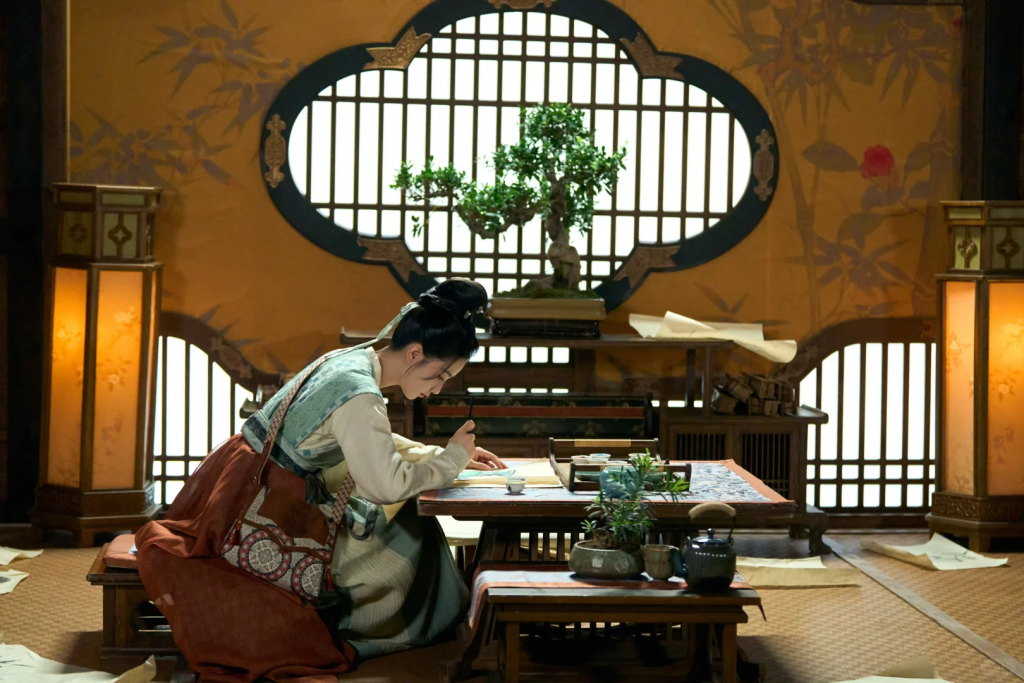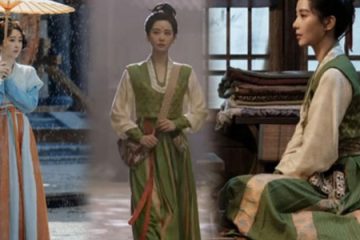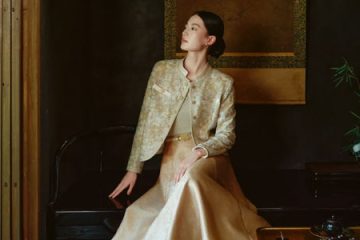Is such a modern bag design really a suitable accessory for Hanfu?

A wave of enthusiasm for Hanfu has been stirred up around the world by various Chinese ancient costume dramas. However, the protagonists in these dramas rarely carry bags. Could it be that the ancient people really had no bags to use? In fact, historical documents clearly record that the ancient people’s habit of carrying bags has a long history. In the new ancient costume drama The Palm (掌心) starring Liu Shishi, all kinds of backpacks also appear in her outfits. Some netizens counted and found that it seems that each piece of clothing has a dedicated bag. Goodness! If I had so many bags at home, I wouldn’t even know what to wear when going out.



Do you still wonder where the ancient people put their money? Don’t you realize that they carried bags too? Stop being obsessed with all the big and small bags Liu Shishi’s character Ye Ping’an (叶平安) has in the drama. In fact, we had our own bags a long time ago. Pick any one of them, and it would be a hot item even today. Counting the unearthed cultural relics in our country, it once again proves that the end of fashion is – China!
Ⅰ. Fashion Moves in Cycles
Fashion, as it turns out, is a cyclical phenomenon. A leather bag unearthed from Niya in Xinjiang, which dates back to the Han and Jin Dynasties, caused a sensation upon its discovery. Its design was strikingly familiar—almost identical to the iconic saddle bag by luxury brand Louis Vuitton. This revelation indicates that modern fashion trends had, in fact, already emerged over 1,600 years ago.




Remarkably, ancient hanfu bags were not limited to the saddle bag style. Handbags, cross – body bags, fanny packs, box clutch bags, backpacks, fishnet bags, underarm bags—you name it, the ancients had it. The variety of bags from that era bears an astonishing resemblance to contemporary fashion. Despite the passage of thousands of years, these remarkable designs have once again captivated the world with the discovery of cultural relics.
Ⅱ. The Beloved Bags
As stated in Classic of Poetry – Major Odes (《诗经·大雅》), “They wrapped up provisions, in small bags and large. (廼裹餱粮,于橐于囊)” Here, “橐” and “囊” refer to small and large – capacity bags respectively. These bags were used to carry dry rations for long – distance travels, with both big and small bags being fully loaded. This kind of bag worn around the waist is the origin of the “佩囊” (waist – hung bag). It not only met material needs but also gave birth to profound idioms such as “give one’s all (倾囊相助)” (literally “empty one’s bag to help”) and “be generous with one’s money (慷慨解囊)” (literally “open one’s bag generously”), which have been passed down to this day.

In other words, in addition to large and medium – sized bags, the ancients also had small bags. Not only women carried bags, but men did too. Bags had become a fashion for the whole nation! The ways of carrying them included cross – body, backpack – style, under – arm… They were the top choices for both fashionable dressing and convenient travel.
During the Tang Dynasty, in order to carry small personal items more conveniently, men would wear a xie die belt (蹀躞带, a type of belt with hanging part). The hanging straps below could be used to hang bags, daggers, knives and other small items. It was very much a part of daily life.

The most remarkable one is the bag commonly seen in the images of Xuanzang. It’s called “经笈” or “行笈”. Usually made of bamboo and rattan through weaving, it was used to hold books, clothes, and so on. This bag not only provided protection against wind and rain but was also equipped with lighting devices. It was practical, full – featured, and ergonomic. It was also the most common item for scholars when they went to the capital to take the imperial examinations. With its compartments having different functions, it could hold scriptures, roll up bedding, shield from rain above, and have a lamp attached in front. It can be regarded as the “predecessor” of modern outdoor bags. For scholars on their way to the capital to take the imperial examinations, they would use such bags to carry essential items. Inside, they could stow away papers, writing brushes, some money, and other small necessities, much like a modern – day schoolbag. The variety of bags from that era bears an astonishing resemblance to contemporary fashion. Who says a schoolbag isn’t a bag? Carry my little schoolbag and off to school I go!

Summary
The bag that we commonly know about the ancients nowadays is the hebao (荷包, a small pouch). The hebao was favored for its delicacy and decorative features. Sachets were not only made of fabric. Metal sachets were also quite common. By putting scented tablets or balls inside, they emitted an alluring fragrance and became a trendy choice at that time…
Perhaps in that era, there were many “big – brand” bags from the East that were extremely hard to obtain. Their various shapes and designs were in no way inferior to today’s high – end luxury brands. These diverse bags, transcending the boundaries of time and social strata, became essential fashion accessories in the daily lives of people in different periods and classes. If the ancients are not considered fashionable, then who is? China has a rich variety of historical heritages, and Hanfu is one of the shining pearls among them. It is hoped that Hanfu will have a more prosperous and long – term development.




0 Comments